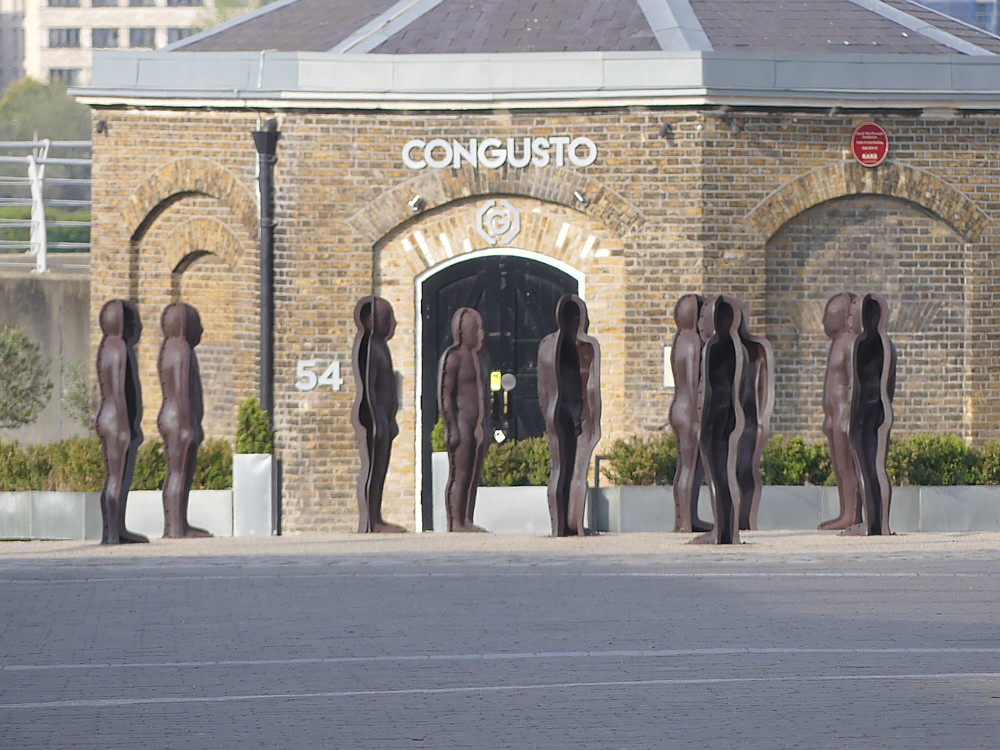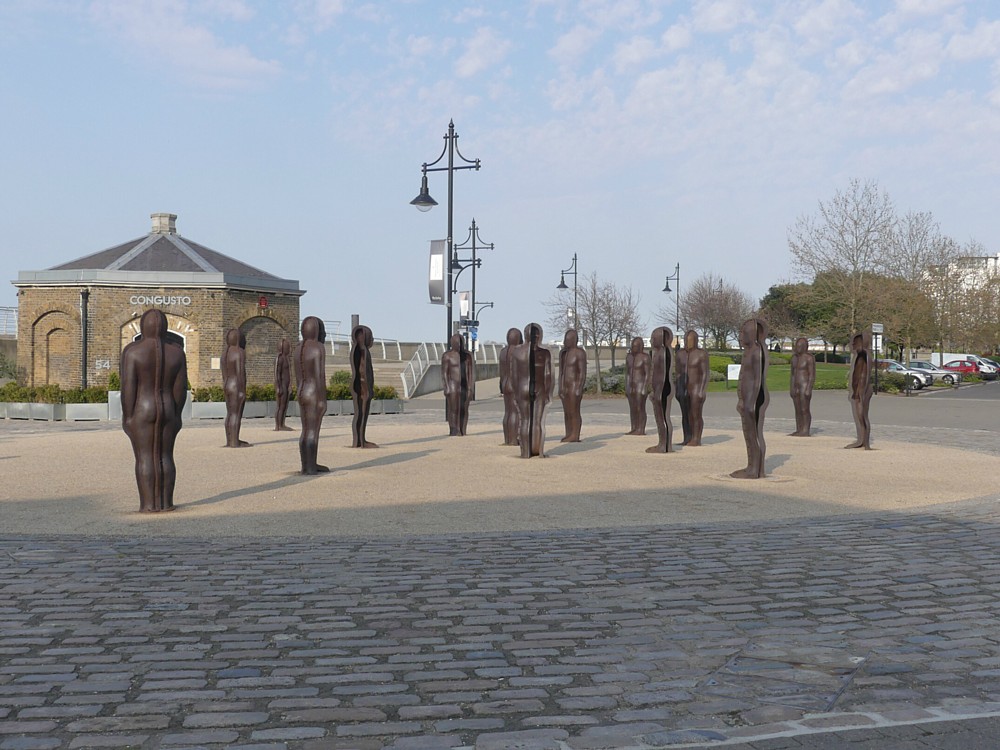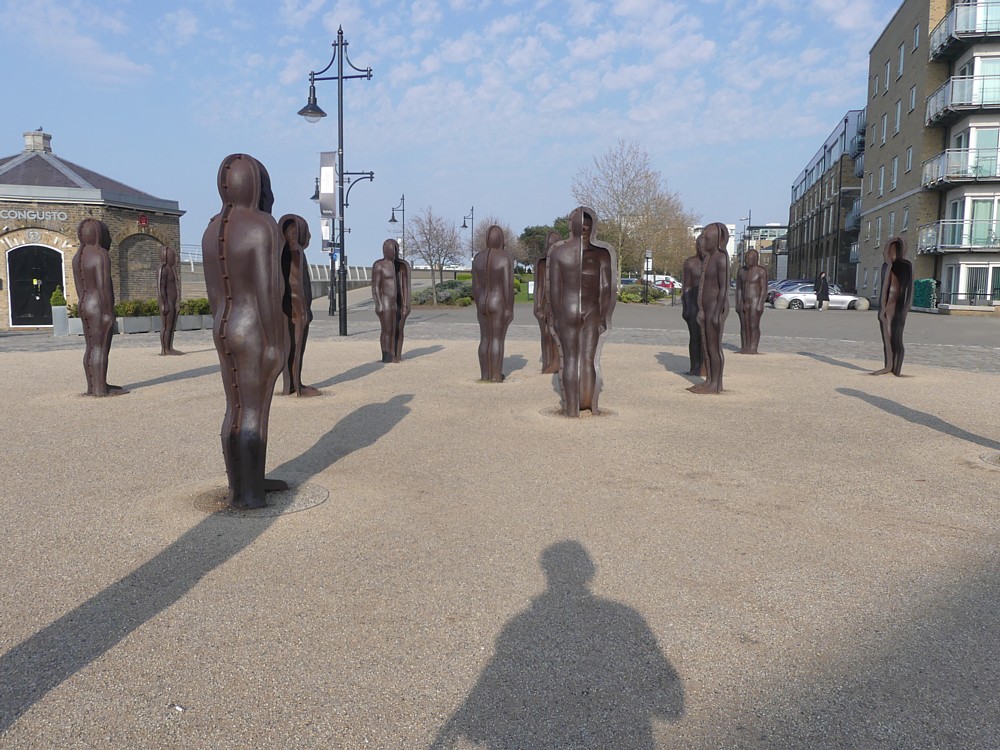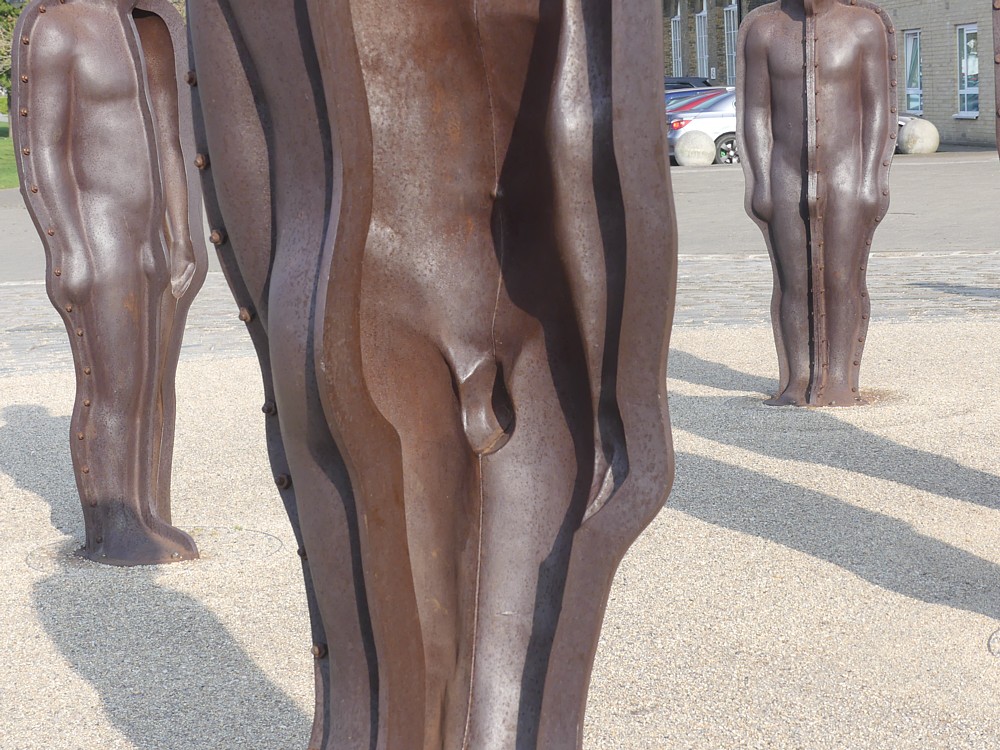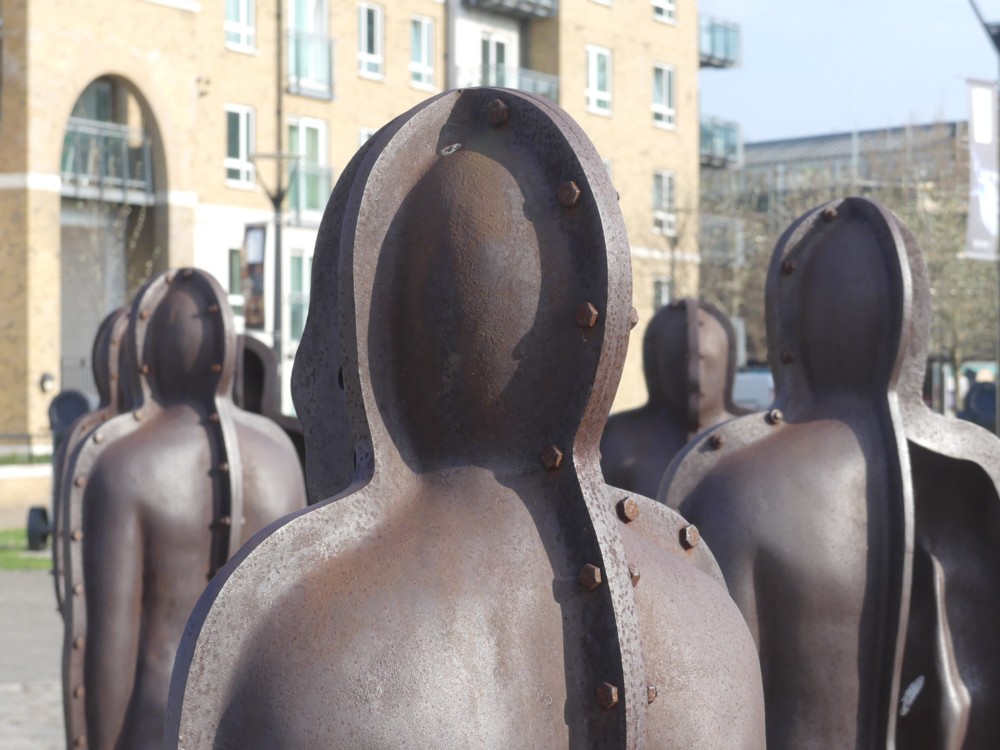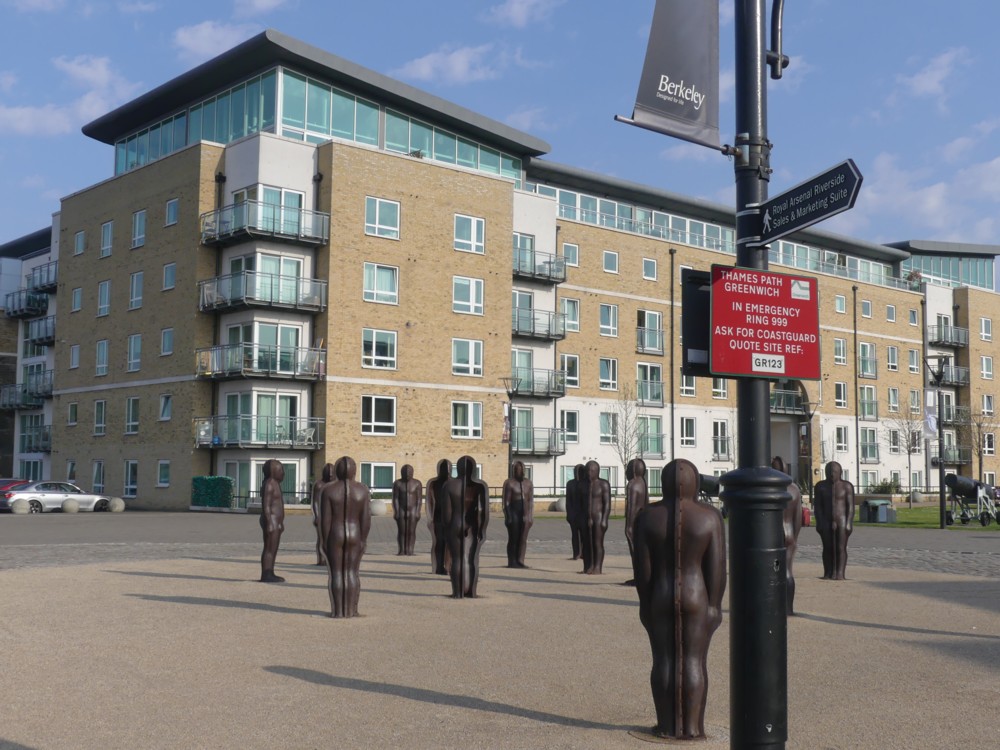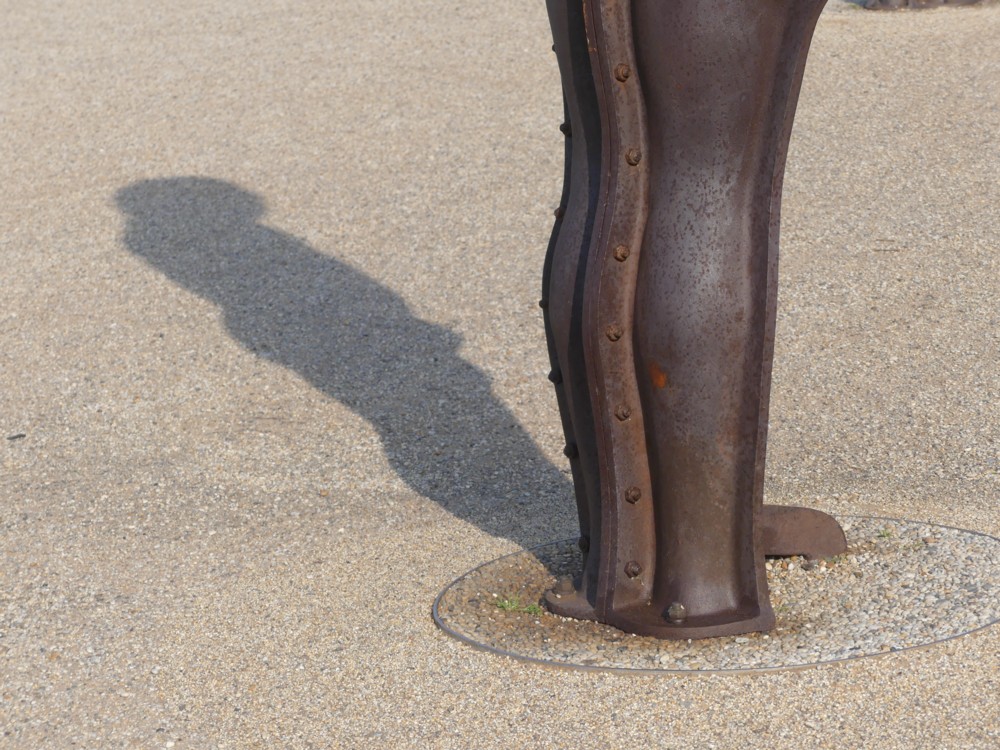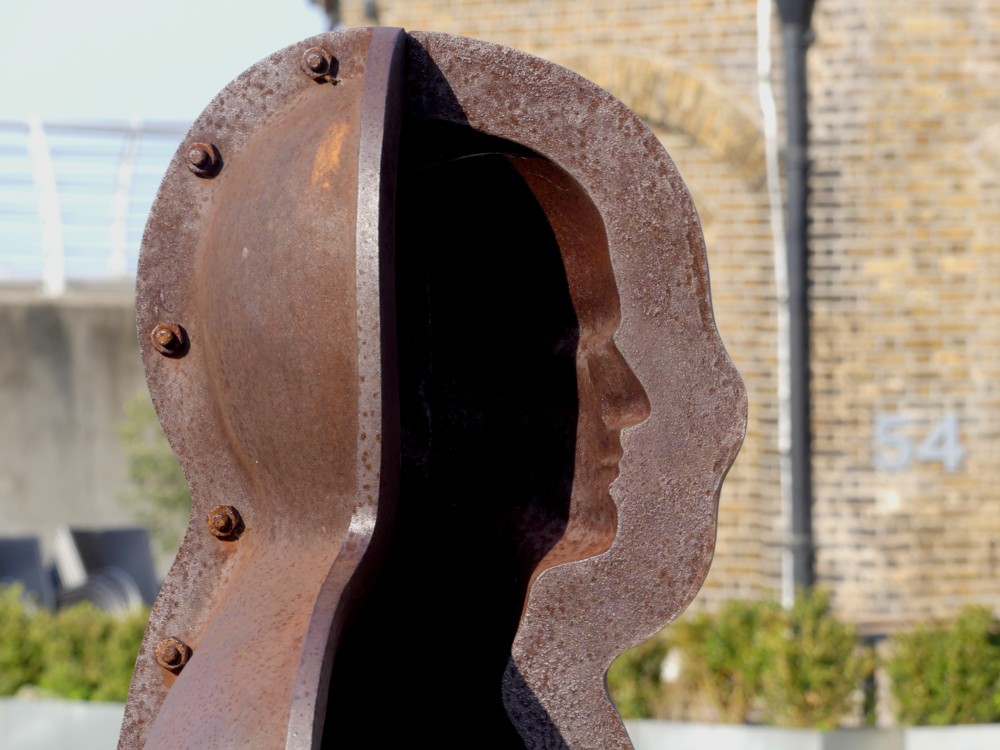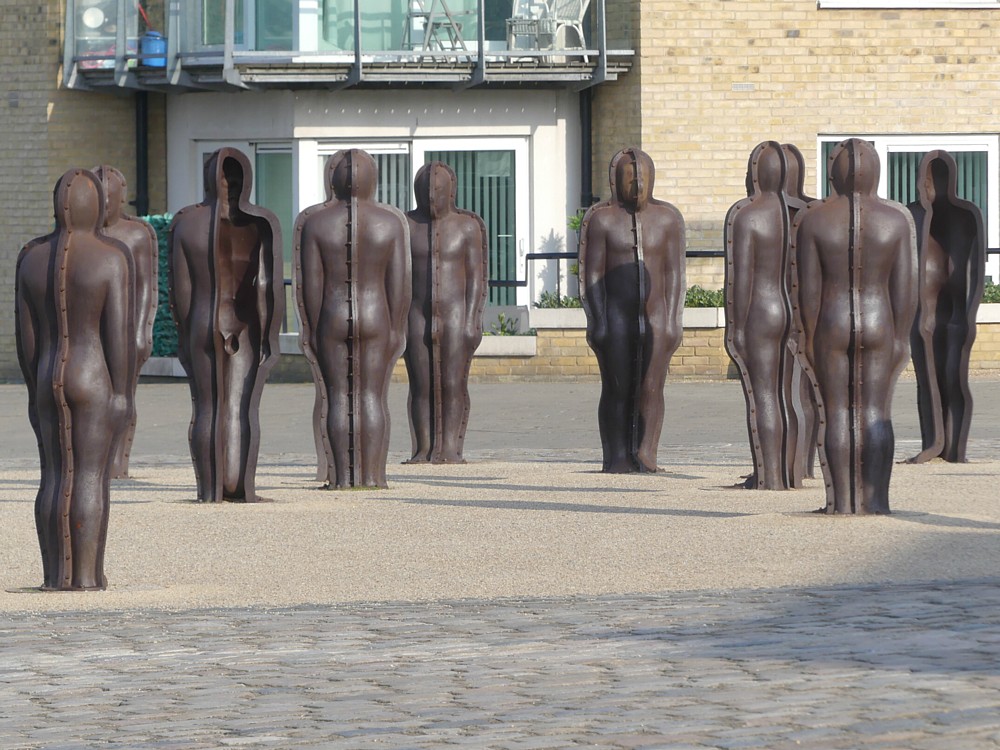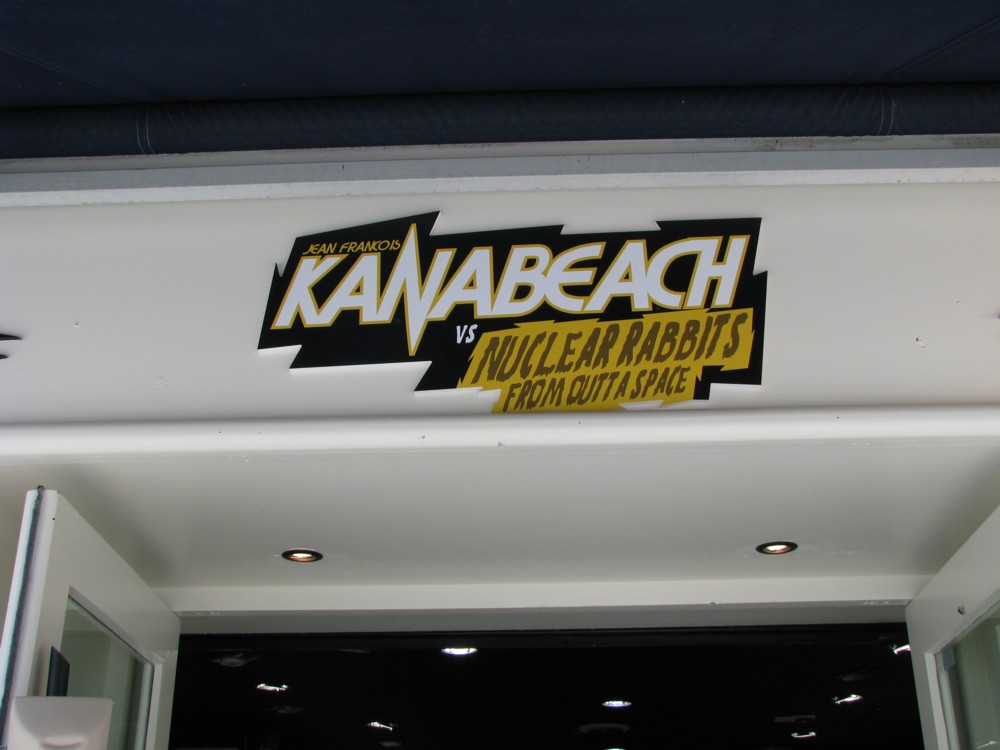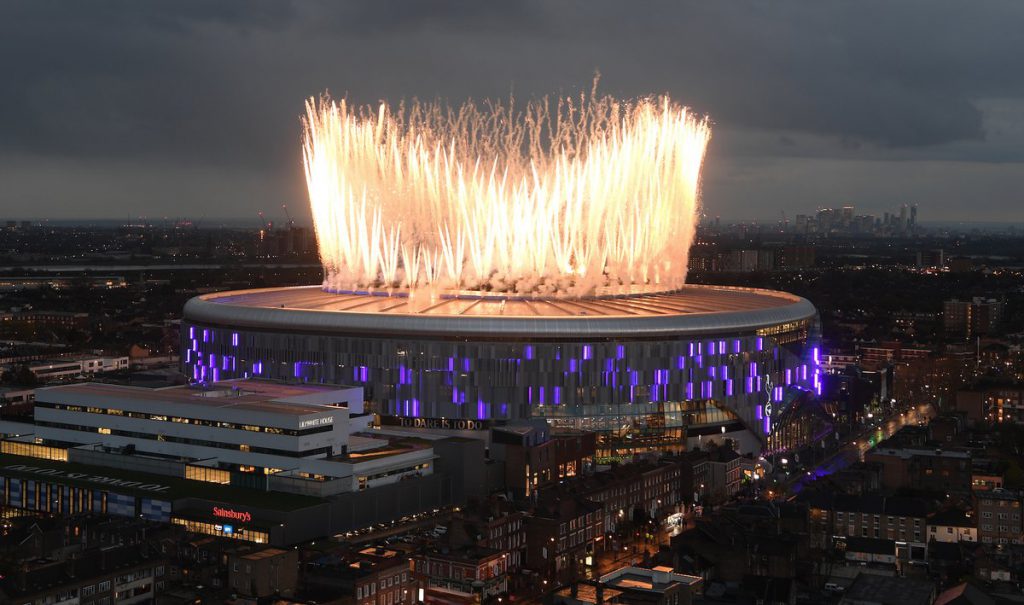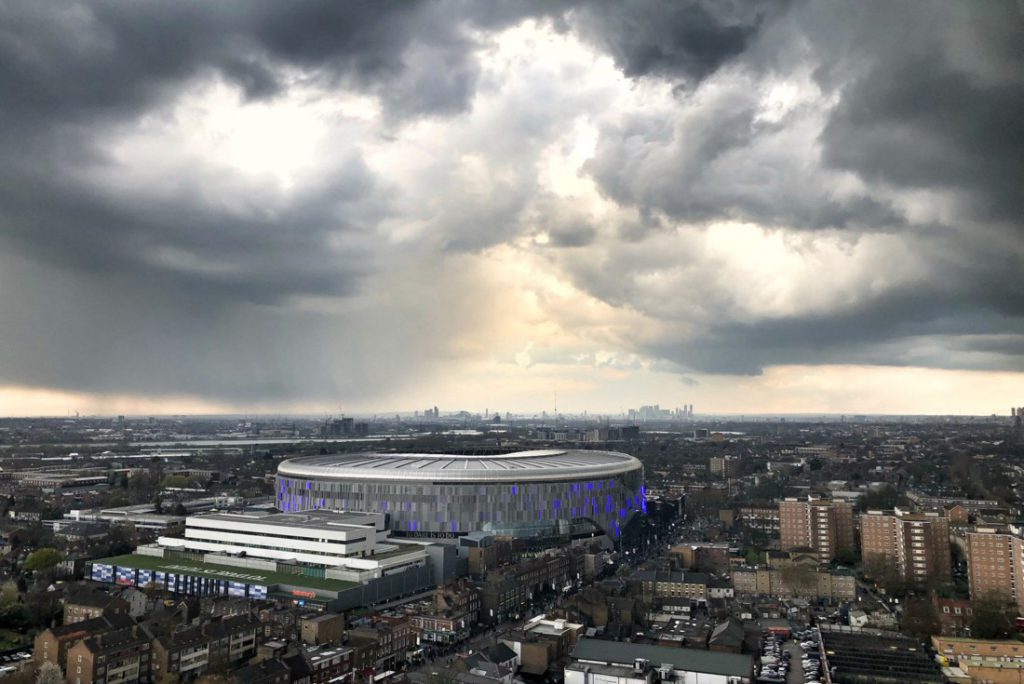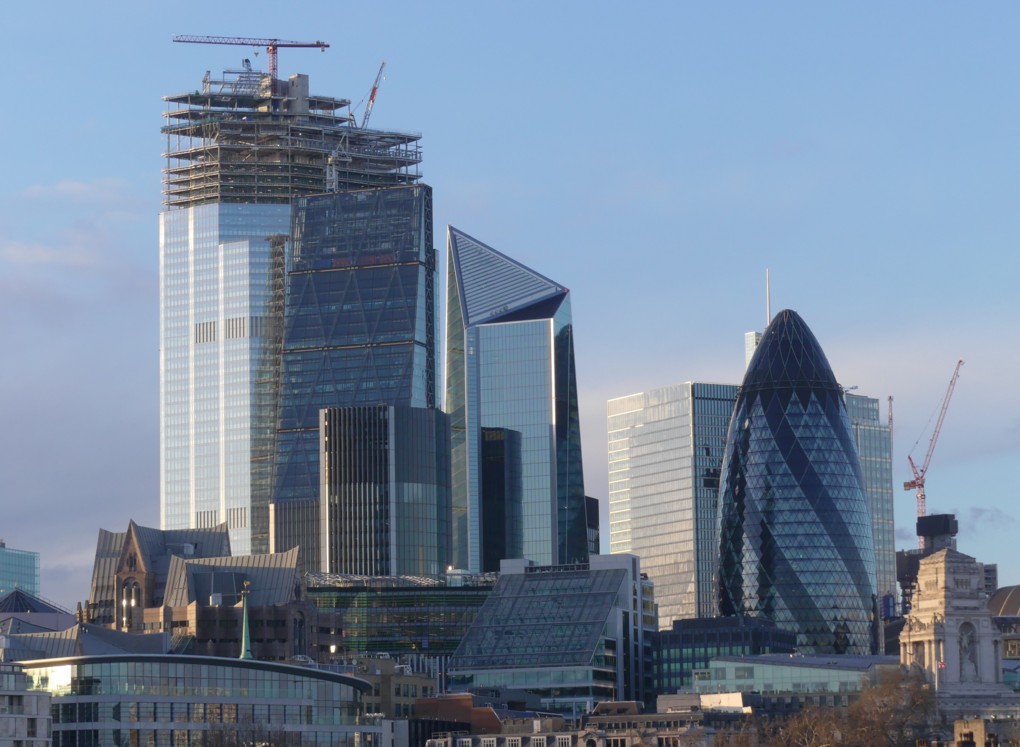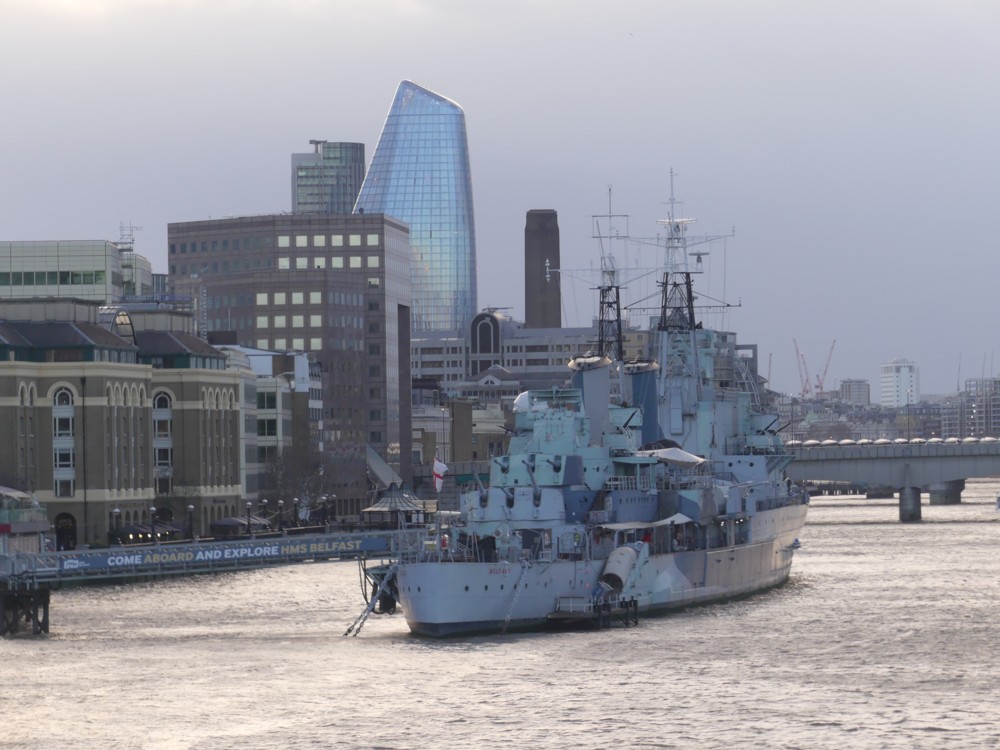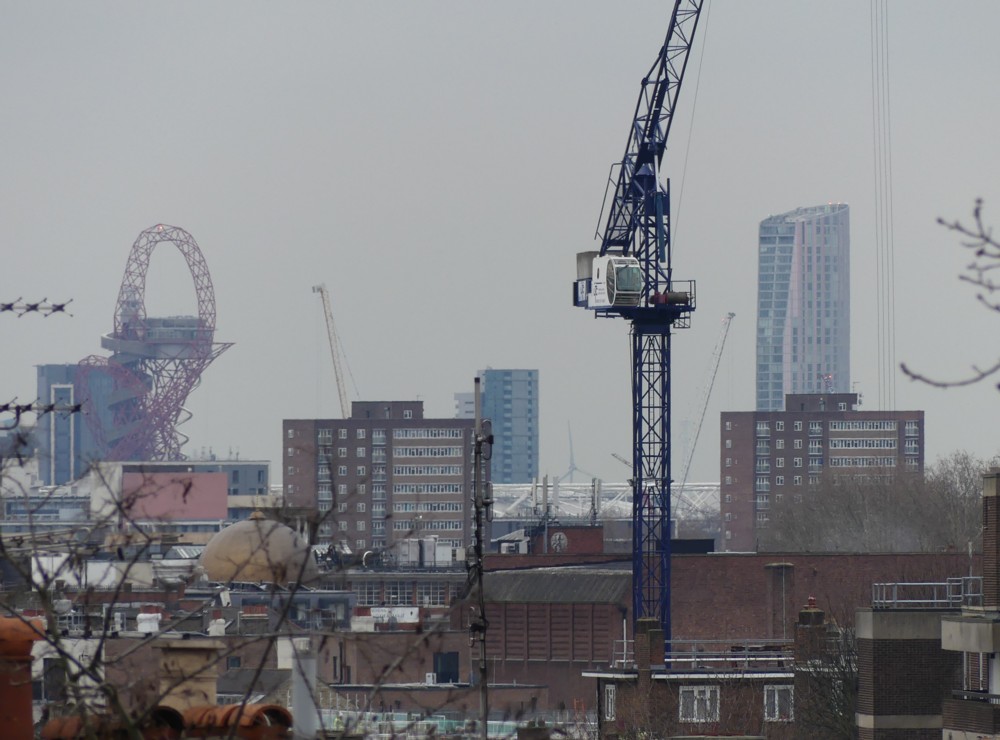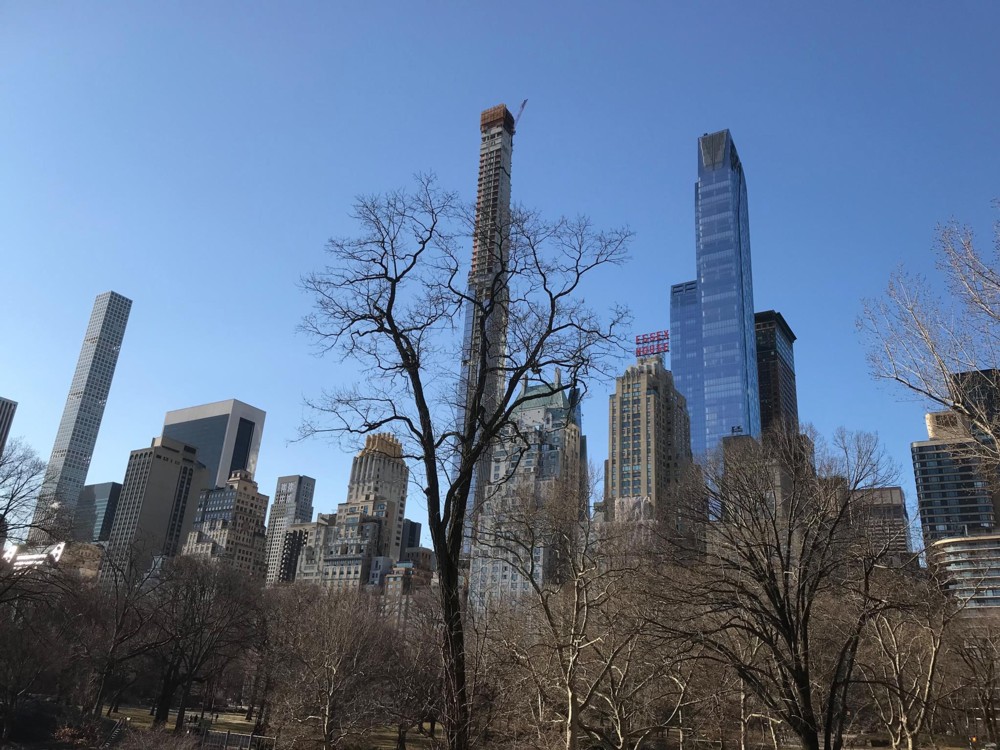The designated starting point of my walk beside the river last Monday was Assembly, the sculpture assembly outside the Woolwich Arsenal next to the river:
Those are some of the photos I photoed, and they are pretty much the photos everyone else photos of these metal men, and pretty much the same as the photos I photoed when last I visited these men (LINK TO THE OLD BLOG). That was in April 2011. It doesn’t feel like it was that long ago, which I think is because these metal men, once seen, are not soon forgotten.
Assembly is the work of Peter Burke. My googling skills are such that I often have to have several goes at a subject before I find my way to the stuff that I find the most informative and interesting. I can just about remember visiting the Peter Burke website, but I don’t recall ever reading this biography of Peter Burke before. Nor do I recall learning that this Assembly assembly began life somewhere else. Or maybe he did an Assembly for that rural setting, and then did another Assembly for outside the Woolwich Arsenal. Yes, probably that. Burke is big on mass production, like his contemporary and mate (apparently) Gormley.
And, I certainly never watched this video of Peter Burke speaking until now. As with all artists talking about their work, I see rather little connection between what he says about his work and what the work says to me. But at least what he says is mostly accurate, in that he mostly describes how he made it. There is hardly any pretentious art-speak bollocks of the sort that would get him sneered at at Mick Hartley‘s.
A key to why I like Peter Burke is that before he started doing art he was a Rolls Royce engineer, working on aero-engines. He liked and still likes how stuff like that looks. Snap. Unlike me, from then on, he knew how to make it.
But someone could do all the things Peter Burke describes himself doing when he does his art and produce art that says nothing to me at all. Insofar as he does describe what he thinks his art actually means, he pretty much loses me. Which might explain why I only like some of his art, such as Assembly.
What I get from Assembly, as well as the obvious military vibes I wrote about in that 2011 posting, is something to do with stoicism, emotional self-control, being a man, being a man under extreme pressure while keeping your manly cool. Even to the point of looking rather comical while doing all this.

